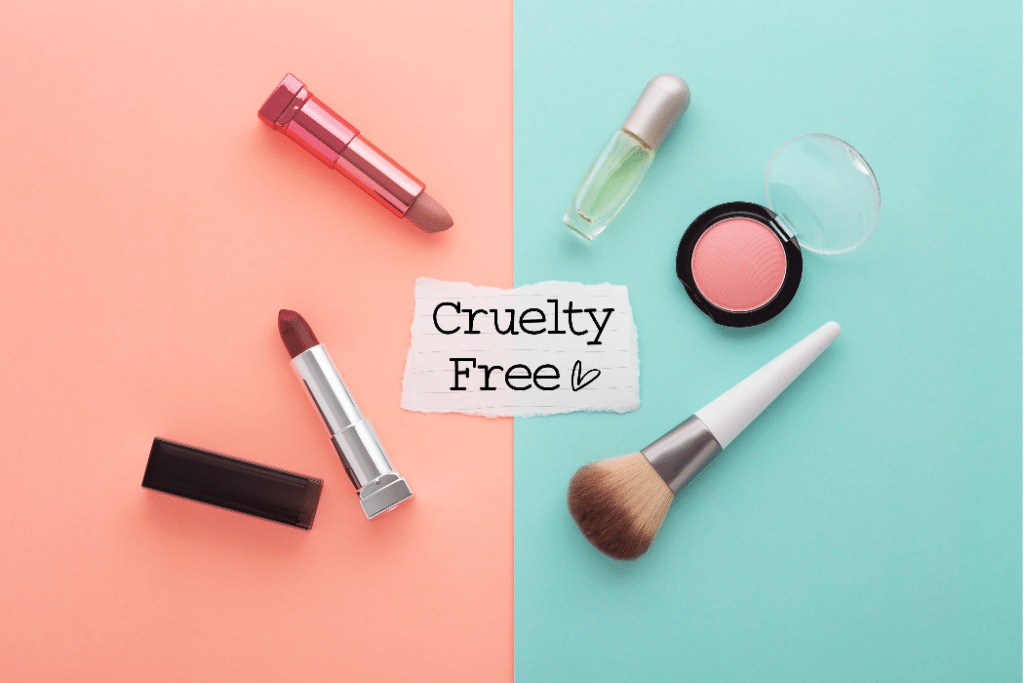The term “cruelty-free” has gained significant traction in recent years, reflecting an increasing consumer demand for ethical and sustainable products. However, understanding the nuances of what “cruelty-free” means and how it impacts consumer choices can be challenging. This article aims to provide a thorough examination of the term “cruelty-free”, exploring its definition, implications, and applications across various industries.
Definition of Cruelty-Free
“Cruelty-free” or “Not Tested on Animals” is a term used to describe products that have not been tested on animals. While seemingly straightforward, the application and verification of this term can be complicated because there is no legal definition (1) for these terms and the usage of these labels are not regulated. This allows anyone to put forth whatever claims they want.
Why is Animal Testing Bad?
At the forefront of the argument against animal testing is the issue of animal rights and ethics. Each year, it is estimated that more than 50 million (2) dogs, cats, rats and other animals are experimented on in the U.S and sometimes intentionally made ill with toxic chemicals.
Further questions have been raised on the relevance of these tests. Though animals share common biological characteristics with humans, they’re not a perfect representation. This can lead to misleading results.
Common Misconceptions About Cruelty-Free
While conceptually cruelty-free seems straightforward, in practice it’s very nuanced. A lot of this comes down to how you define cruelty-free, and at what stage in the development process you’re referring to. Three loopholes to watch out for:
- “Finished product not tested on animals” – The finished product is the final product that you see and purchase. Some companies will claim the finished product was not tested on animals, when instead many of the ingredients were tested on animals.
- Suppliers & Third parties – Some companies will claim their company or brand does not conduct animal testing. However they may work with third parties or suppliers that do.
- “No animal testing unless required by law” – While this seems like a reasonable exception, it should be noted that China requires animal testing for most cosmetic products imported and sold in China. So if the brand you’re using is selling in China, they likely conduct animal testing.
It’s worth mentioning that many of the common ingredients deemed safe for usage have been tested on animals decades in the past. While the past can’t be changed, we can instead focus on companies that are not conducting new animal testing and choose brands that do not support or conduct new animal testing.
The Current Landscape of Cruelty-Free Practices
Cruelty-free practices have found broad application across various industries, with cosmetics, personal care, and cleaning products being the primary adopters. The implementation of cruelty-free practices across industries is subject to the regulatory landscape and consumer demand, both of which can significantly vary across regions.
Laws and regulations concerning cruelty-free labeling vary globally. Countries like those in the European Union have implemented comprehensive bans on animal-tested products. In contrast, others have less stringent or non-existent regulations. This fragmented landscape has resulted in third-party organizations such as Leaping Bunny and PETA stepping in to provide certifications, bringing much-needed credibility to cruelty-free claims.
Animal testing involves a range of invasive procedures that can cause significant harm to animals. However, advancements in science and technology have made cruelty-free alternatives more feasible, such as in vitro testing, computer modeling, and synthetic tissue.
How to Identify Cruelty-Free Products
Recognizing cruelty-free products goes beyond looking for a logo; it also involves deciphering ingredient lists and being wary of misleading marketing claims. As mentioned earlier in the article, the terms “not tested on animals” and “cruelty-free” are not interchangeable. A product labeled “not tested on animals” may still contain ingredients tested on animals by a third party, while a product labeled “cruelty-free” suggests no form of animal testing was involved at any stage of production.
Cruelty-Free Certifications
In the absence of regulations around the usage of “cruelty-free” labels, non-profit organizations such as People for the Ethical Treatment of Animals (PETA) (3) and Coalition for Consumer Information on Cosmetics (CCIC) (4) have played an important role in bringing transparency to the industry and guiding customers.
With all the loopholes and inconsistent labeling, looking for the right cruelty-free certification will be your most reliable method of finding a product and brand that truly reflects your values. However not all certifications are created equally. Here’s what you need to know about each.
The Leaping Bunny
The Leaping Bunny is widely recognized and known to have the highest cruelty-free standards. Requirements (5) to be certified include:
- A pledge that the company (AND their suppliers / manufacturers) do not conduct animal testing from all stages of product development
- Written documentation to show they do not conduct animal tests, including from their suppliers and manufacturers.
- Company must accept ongoing independent audits
- Annual recommitment
People for the Ethical Treatment of Animals (PETA)
PETA is a fairly reliable proof of cruelty-free, however their less stringent requirements have made them less trustworthy. Many have criticized the organization’s for not validating that the brands are truly not conducting animal testing. All that is required is a pledge. Requirements to be certified:
- Pledge in writing not to conduct or commission any animal tests on ingredients, formulations, or finished products
Difference Between Cruelty-Free and Vegan
“Cruelty-free” refers to the absence of animal testing at all stages of product development, whereas “vegan” denotes the absence of animal-derived ingredients in the product. Though they may seem similar because both terms involve animals, they are actually very different. It is important to note that a product can be vegan without being cruelty-free, and vice versa.
An example of a cruelty-free product that is not vegan: A makeup product that contains honey as an ingredient, but the product (and its ingredients) is not tested on animals.
An example of a vegan product that is not cruelty-free: A shampoo product that does not contain any animal derived products as an ingredient, but is tested on animals for side effects.
Your Role as a Cruelty-Free Consumer
Choosing cruelty-free is not without its challenges. While the perception persists that cruelty-free options are more expensive, this is not always the case. An increasing number of affordable cruelty-free options are now available, driven by growing consumer demand. In terms of accessibility, both online and physical stores now provide a wide range of cruelty-free products, making it easier than ever to transition towards cruelty-free consumption.
The power of consumers in shaping industry practices is undeniable. Through conscious purchasing decisions and advocating for more cruelty-free options and better regulations, consumers can exert a tangible influence on the market. Staying informed about cruelty-free products and practices through reliable resources can further enhance this impact.
Conclusion
Understanding and choosing cruelty-free products is a critical step in promoting animal welfare. By equipping yourself with the knowledge outlined in this article, you can now better navigate the complexity of cruelty-free and make more informed choices that contribute to a more sustainable and ethical world.
References
- “Cruelty Free”/”Not Tested on Animals.” FDA, 2022. https://www.fda.gov/cosmetics/cosmetics-labeling-claims/cruelty-freenot-tested-animals
- “Taking Suffering Out of Science.” Humane Society. https://www.humanesociety.org/all-our-fights/taking-suffering-out-science
- “About PETA.” PETA, 2023. https://www.peta.org/about-peta/
- “About Leaping Bunny.” Leaping Bunny, 2023. https://www.leapingbunny.org/about/about-leaping-bunny
- “The Corporate Standard of Compassion For Animals (“The Standard”).” Leaping Bunny, https://www.leapingbunny.org/about/corporate-standard-compassion-animals-standard




